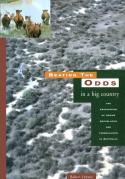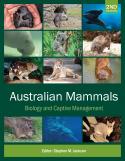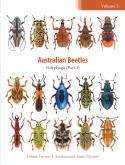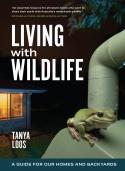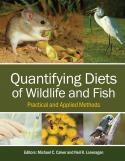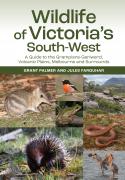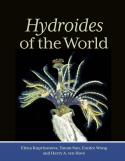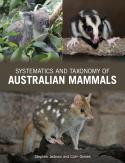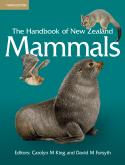The implementation of the Brucellosis and Tuberculosis Eradication Campaign has been one of the most significant animal health achievements in the history of Australia and worldwide. The unprecedented technical and operational complexity of the campaign presented an enormous challenge to cattle producers, veterinarians, research scientists, field staff and administrators over the 25 years
of the project.
Beating the Odds in a Big Country captures the dynamism of the campaign and records the very real contribution in cash and kind made by the many producers whose herds were subject to eradication programs.
- Page 1Abstract
When some 500 cattle producers and people connected with the industry gathered for dinner at Townsville’s Sheraton Breakwater Hotel on 25 November 1992, they were celebrating a remarkable achievement. After a 22-year campaign, Australia was about to be declared ‘impending free’ of one of the worst cattle diseases, bovine tuberculosis; the declaration came on 31 December. Three-and-a-half years earlier; the nation had been declared free of another scourge of beef and dairy herds, bovine brucellosis.
- Page 9Abstract
Formby Sutherland, a seaman on the Endeavour, has the distinction of almost certainly being the first victim of tuberculosis buried in Australia. Captain Cook’s diary records that he died of ‘consumption’ and was interred at Botany Bay on 1 May 1770, 2 days after the party’s arrival. His was one of hundreds of thousands of deaths from TB to occur in Australia. Calculations by AJ. Proust, a historian of the disease, put the toll between 1850 and 1990 at roughly 335 000 people, and tens of thousands more must have succumbed between 1788 and 1850. Bovine tuberculosis contracted from infected cattle, their meat and, particularly, their milk was undoubtedly responsible for many of the deaths.
- Page 23Abstract
If one event can be pointed to as the trigger that sparked the national TB and brucellosis eradication campaign, it was a decision by West Germany’s Ministry of Health in the second half of 1965 to issue new regulations on fresh meat imports. These stipulated, among other things, that from 1 January 1966 meat entering Germany had to be derived from herds officially certified as free of brucellosis or from animals demonstrated to be clear of the disease in a test performed no more than 30 days before slaughter.
- Page 35Abstract
BTEC was one campaign, but it divides neatly into two halves. In the 1970s most of the action was in the southern States and south-eastern Queensland and the emphasis was on brucellosis, the main problem there. Then, from the early ’80s, the focus switched to northern Australia and the problems — which at times seemed intractable — of eradicating TB from that vast region’s scattered herds.
- Page 57Abstract
One major event that helped set the scene for the second half of the campaign was the establishment of the Cattle Industry BTEC Liaison Committee as a communication channel between industry and national management of the campaign. Another was the formation of a working party, with representatives from the Northern Territory, Western Australia, Queensland and South Australia, to develop policy options for the campaign in northern Australia. Both groups held their first meetings in 1980.
- Page 81Abstract
Australia’s first compulsory brucellosis eradication program began in Tasmania in 1955, and got off to a somewhat shaky start. Within 3 years farmer complaints had prompted the State Parliament to set up an inquiry to advise on whether it should continue. Farmers argued that the test-and-slaughter campaign was unnecessary because the disease was no longer a problem; vaccination had it under control. They claimed that eradication would bring no additional benefit, and in the meantime farmers would suffer severe losses as reactors to the brucellosis blood test were culled from their herds. Some also argued that complete eradication was an impossible goal.
- Page 113Abstract
When the national campaign began in 1970, TB looked a considerably easier candidate for eradication than brucellosis in the southern, more intensively farmed regions of Australia. Tasmania appeared to be TB-free, and State-run eradication campaigns in the 1950s and ‘60s had reduced infection to very low levels right across the south — from New South Wales to the south-west of Western Australia.
- Page 139Abstract
One of Australia’s most remarkable structures is the Dog Fence, built in the 1910s and ’20s to keep dingoes out of sheep country. The 2-metre high fence is nearly 10 000 km long. It heads north and east from the Great Australian Bight in western South Australia to the New South Wales border north of Broken Hill, then north through western Queensland almost to the Gulf of Carpentaria, and then south again to the Macintyre River, 250 km inland from Brisbane.
- Page 165Abstract
Queensland is the Australian State with the biggest cattle population — about 10 million in some 35 000 herds. It also contains all kinds of cattle enterprise, from the small dairy farms mainly concentrated in the south-east to the vast dry stations of the far west and the equally vast runs of the remote tropical north. At the start of the national campaign, eradicating TB and brucellosis seemed a daunting task, and by 1975 the State’s Primary Industries Department was forecasting for TB only that Queensland might be provisionally free by 1990.
- Page 195Abstract
After Queensland became impending free of TB on 1 January 1990, the far northern cattle country of Western Australia and the Northern Territory became the campaign s final focus of attention. The Territory was moving to impending freedom in stages, but by the beginning of 1990 only 40% of its 1 475 000 cattle, and 105 of its 261 stations, were in regions that had got there. These were in the south, where notable progress had been made in the 1970s. In Western Australia, much work remained to be done in the remote Kimberley and Pilbara regions where, as in the Territory’s Top End, concerted efforts to eradicate TB had been left until relatively late in the campaign.
- Page 227Abstract
When Australia achieved national impending freedom from TB at the end of 1992, it already more than met international requirements for a declaration of ‘freedom’. The world veterinary health organisation, the Office International des Epizooties (OIE), is the body responsible for issuing such definitions. According to its requirements, a country, or part of a country, can describe itself as ‘free’ if at least 99.9 % of its cattle have been in officially TB-free herds for at least 6 years.


